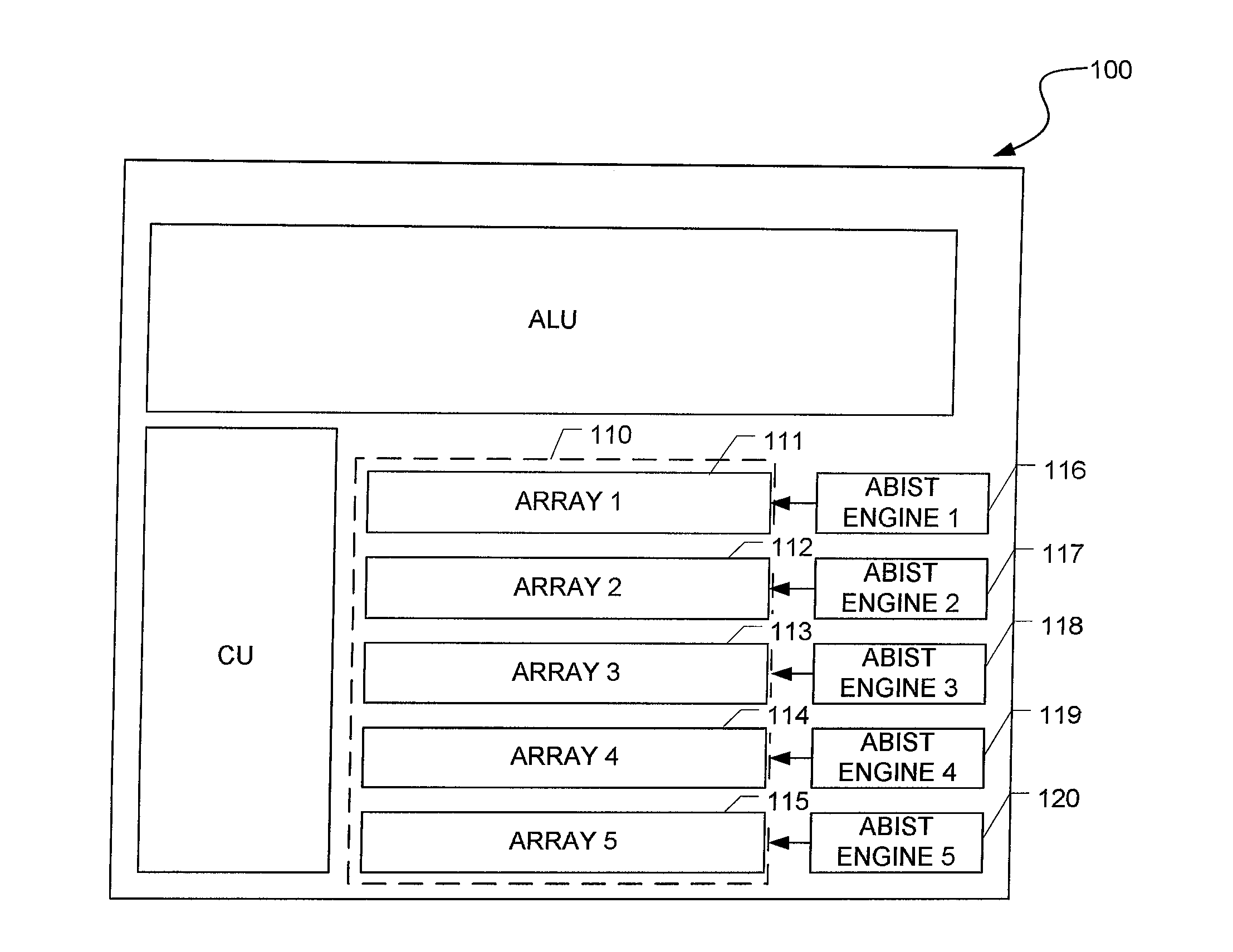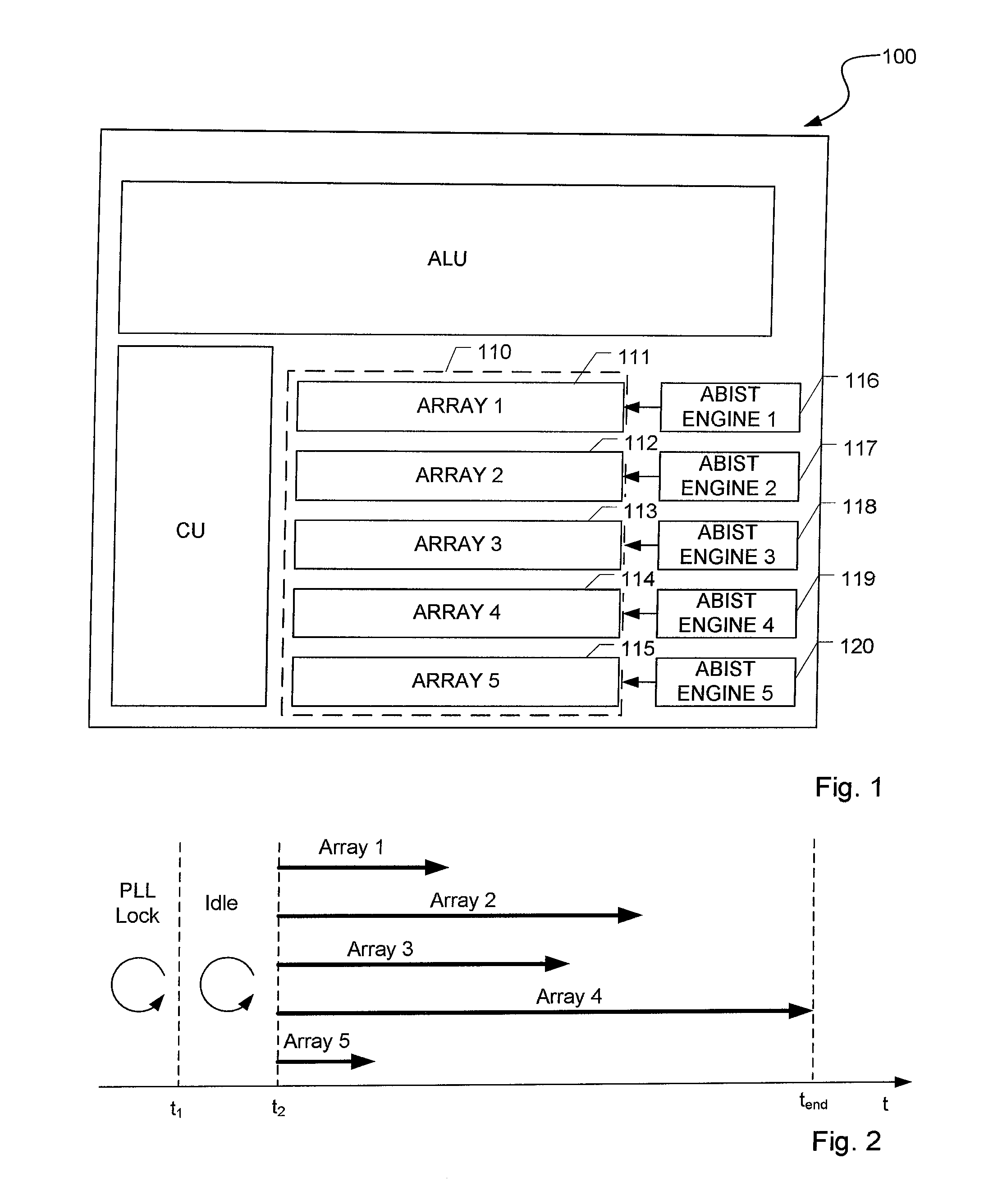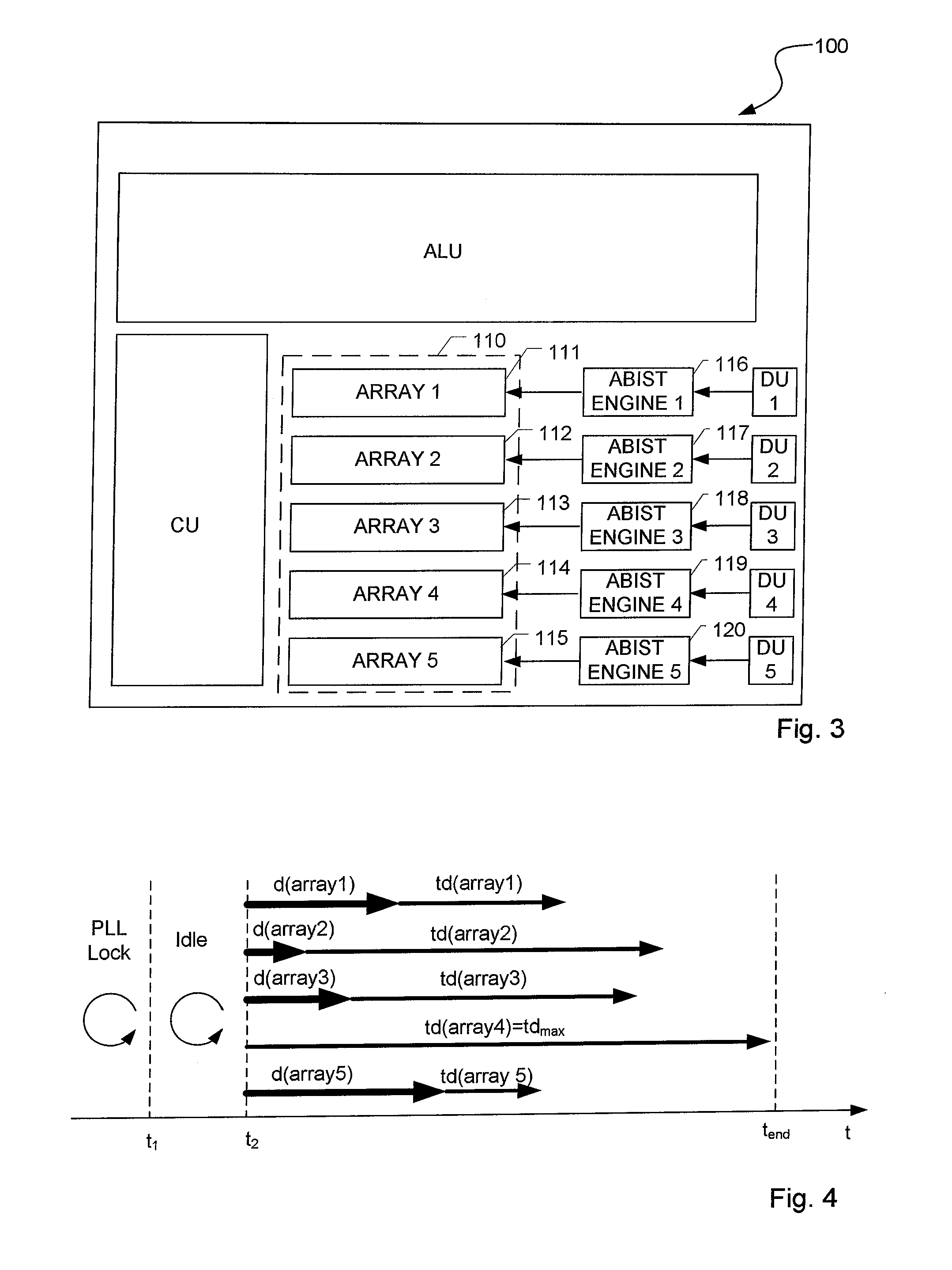Method for performing built-in self-tests and electronic circuit
a self-testing and electronic circuit technology, applied in the field of vlsi chip testing, can solve the problems of supply voltage fluctuations, significant electrical power consumption of abist, etc., and achieve the effect of reducing current fluctuations
- Summary
- Abstract
- Description
- Claims
- Application Information
AI Technical Summary
Benefits of technology
Problems solved by technology
Method used
Image
Examples
first embodiment
[0048]FIG. 4 shows a schematic flow chart of performing ABIST according to a According to the demonstrated example, the electronic circuit 100 comprises five memory arrays to be tested. It is worth mentioning that the electronic circuit 100 is not limited to said number of memory arrays, i.e. may comprise more or less than five memory arrays. In addition, each memory array may be formed by a set of memory sub-arrays to be tested by a common ABIST engine. As indicated above, after starting the test, a first procedure, so-called PLL lock, may be performed. After finishing the first procedure (point of time t1), a second procedure (Idle) may be performed during which the phase locked clock is provided to the memory arrays 111-115. After finishing the second procedure (point of time t2), the ABIST procedures of the respective memory arrays may be started consecutively.
[0049]Preferably, before starting the ABIST procedures, the test durations of all memory arrays are determined. The tes...
second embodiment
[0052]FIG. 5 shows a schematic flow chart of performing ABIST according to a second, preferred embodiment. According to said second embodiment, the delay values for delaying the start ABIST engines are chosen such that all ABIST engines 116-120 stop at the same point of time, namely at the point of time at which the longest running ABIST engine terminates (tend). The delay value for delaying the start of an ABIST engine may be calculated based on the longest test duration tdmax and the test duration of the memory array said ABIST engine is correlated with. Specifically, the delay duration may be calculated based on the following formula:
dn=tdmax−tdn;
wherein dn is the delay value correlated to memory array n, tdmax is the period of time which is needed by the longest running ABIST engine for performing ABIST procedure and tdn is the period of time which is needed for performing ABIST procedure of memory array n, wherein n is an integer, n [1;N] and N is the number of memory arrays co...
PUM
 Login to View More
Login to View More Abstract
Description
Claims
Application Information
 Login to View More
Login to View More - R&D
- Intellectual Property
- Life Sciences
- Materials
- Tech Scout
- Unparalleled Data Quality
- Higher Quality Content
- 60% Fewer Hallucinations
Browse by: Latest US Patents, China's latest patents, Technical Efficacy Thesaurus, Application Domain, Technology Topic, Popular Technical Reports.
© 2025 PatSnap. All rights reserved.Legal|Privacy policy|Modern Slavery Act Transparency Statement|Sitemap|About US| Contact US: help@patsnap.com



